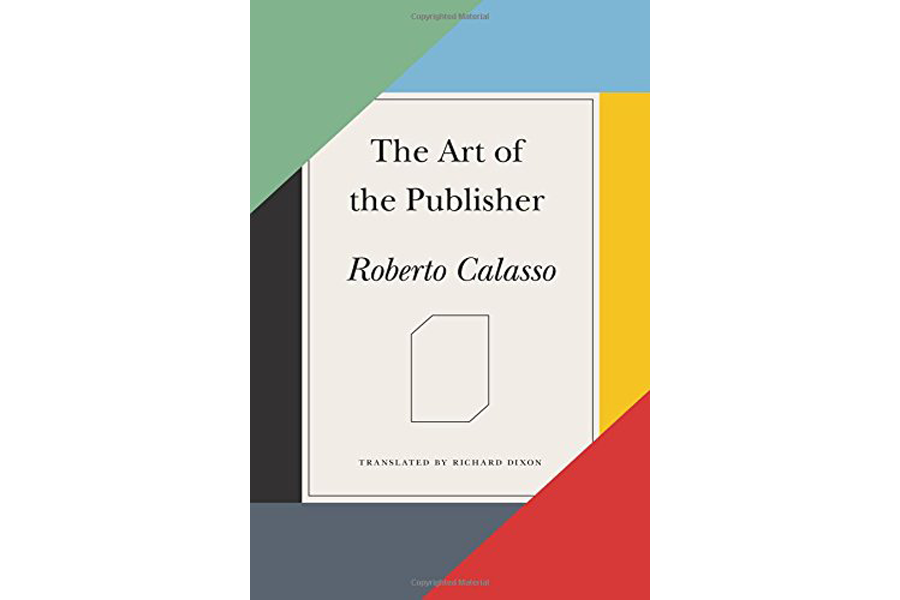'The Art of the Publisher' is a graceful, intelligent tribute to the world of book publishing
Loading...
Many book publishers are famously bad judges of literary merit. Long before Alice Munro won a Nobel Prize and an international reputation, Knopf deemed her work “easily overlooked,” and “quickly forgotten.” Her case is not unusual: works by Ernest Hemingway, David Mitchell, Kurt Vonnegut, George Orwell, Sylvia Plath, and literally dozens of other soon-to-be-celebrated writers were initially rejected by multiple major publishing houses.
These anecdotes suggest that publishers with taste are at least as rare as writers with talent. This makes good taste itself a kind of talent, and the publisher’s suite of skills – everything from recognizing good work to presenting and promoting it to the public – something more than a mere trade. Perhaps in its best manifestations, publishing can even be an art.
The ideal of publishing as art is persuasively defended by the Italian intellectual and publisher Roberto Calasso in his new book, The Art of the Publisher. Since 1999 Calasso has run the Milan publishing house Adelphi Edizioni, where he has worked in various editorial capacities for over 50 years.
His book is not merely the wandering reflections of an aging publisher. Nor is it a self-congratulating history of Adelphi Edizioni, though he does show justifiable pride in Adelphi’s achievements (they have published Borges, Nabokov, Wittgenstein, Kundera, as well as a host of other writers – Robert Walser, Joseph Roth, Max Stirner – less familiar to American audiences.
Calasso’s reflections on publishing show the same deep erudition and critical acuity as his earlier books, which include brilliant, polymathic, and difficult-to-classify works on Greek mythology, Hindu mythology, Kafka, and Tiepolo, among others. And while it’s clear that his new book, unlike these earlier works, collects separate, shorter pieces linked to discrete occasions, Calasso is too intelligent to write a speech or an article without saying something important and interesting.
He begins with the observation that publishers differ from purveyors of frozen vegetables, microchips, buttons, and most other salable commodities. “A good publishing house is unlikely to be of any particular interest in economic terms,” he writes. “Publishing good books has never made anyone terribly rich.”
A good book may or may not sell a huge number of copies, but its value is distinct from and not reducible to its commercial success. Calasso recognizes the need to sell and market books, of course. But he seems to hold the sensible and increasingly rare position that for publishers to be more than button merchants, they must begin by choosing good books and then try to sell them, rather than choosing books they think will sell and then declaring them good.
“The true publisher – since such strange beings still exist – never reasons in terms of “literary” or “commercial” but, if anything, in the old terms of “good” and “bad,”” he writes. This is bracing and refreshing advice, the sort of thing that ought to be required reading for editors and executives industry-wide. But it might also be dismissed as hopelessly naïve about financial realities.
To such critics, however, Calasso responds in several convincing ways. He first draws on decades of experience to give many examples of books with little perceived commercial potential that were accepted for publication because of their merits and went on to sell very well. Sometimes this does not happen, of course, and excellent books sell only a small number of copies. There are still aesthetic and cultural reasons to endorse the support of such books by publishers, but it also makes strategic business sense. For a publisher to be recognized as a reliable selector of high-quality books, they need to reliably select books of high quality. A very good book that does not sell well doesn’t weaken or dilute the brand of a publisher, whereas a constant stream of mediocre books, even if they occasionally generate high sales, can rapidly compromise trust in the brand as a guarantee of quality.
“In the first ten years of the twenty-first century,” he writes, “we have witnessed a progressive blurring of differences among publishers.” The idiosyncratic but self-consistent tastes of particular publishing houses are increasingly difficult to detect, as more and more publishers fetishize the same flawed indicators believed to predict success – previous book sales by the author, size of authorial “platform,” perceived trendiness and timeliness of the topic, etc.
Calasso’s meditation on publishing ranges comfortably from an introduction to the Renaissance printer Venetian Aldus Manutius, whose 1502 edition of Sophocles arguably invented the paperback, to a sharp deconstruction of a vapid article by Kevin Kelly on the future of books for The New York Times Magazine. Through a combination of history and criticism, anecdote and argument, Calasso gradually develops his own vision of a great publisher as one whose books can all “be seen as links in a single chain, or segments in a serpentine progression of books, or fragments in a single book formed by all the books published by that publisher.”
This is a fascinating image, one that conjures a subtle combination of continuity and heterogeneity. Adelphi has published a huge range of authors on a near-infinity of subjects, everything from neuroscience to journalism to obscure Austrian fiction. If all of these books constitute a single composite, it’s a very large serpent indeed. And yet as Calasso makes clear, every Adelphi title does ultimately reflect a particular sensibility; their protean collection is unified by a discernible, defensible set of tastes and values. It’s a model that deserves both admiration and emulation.








